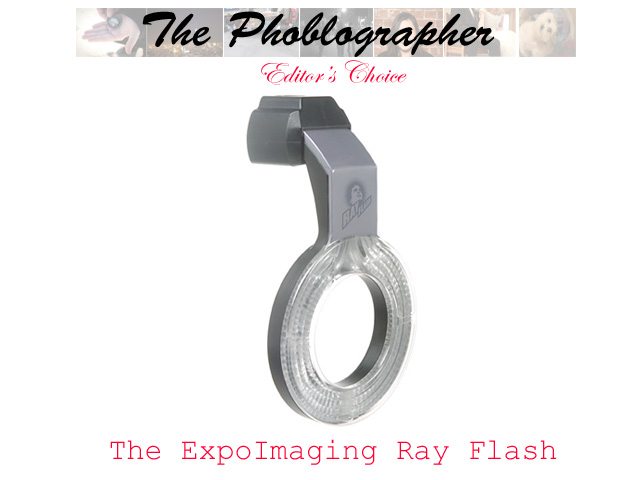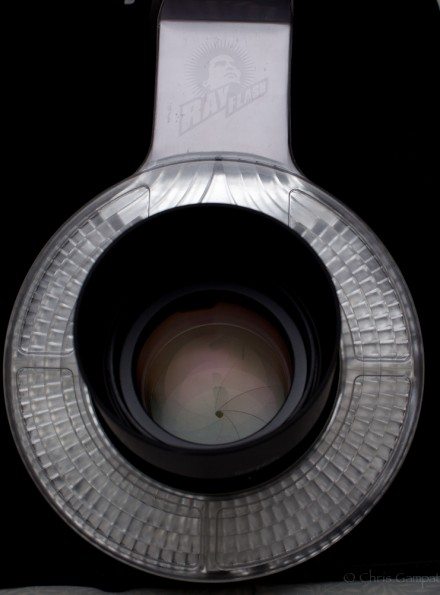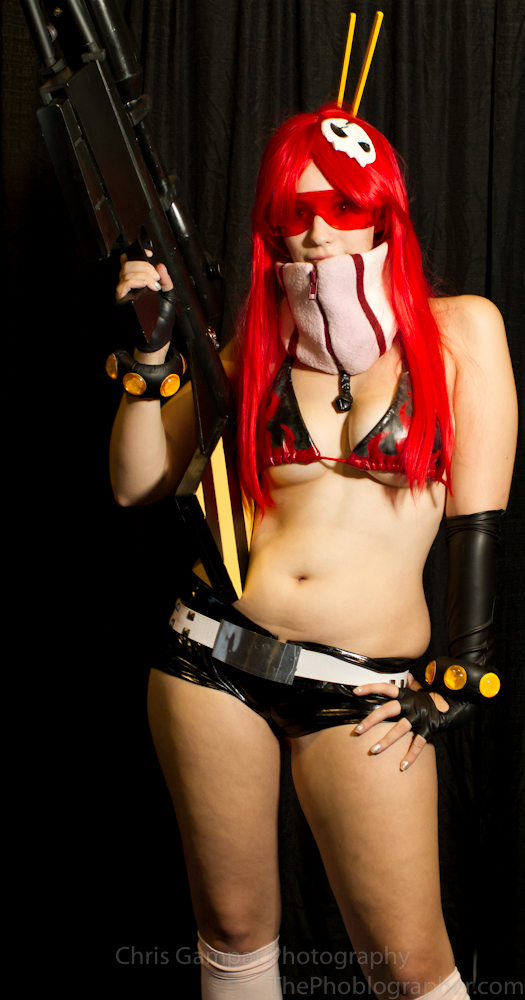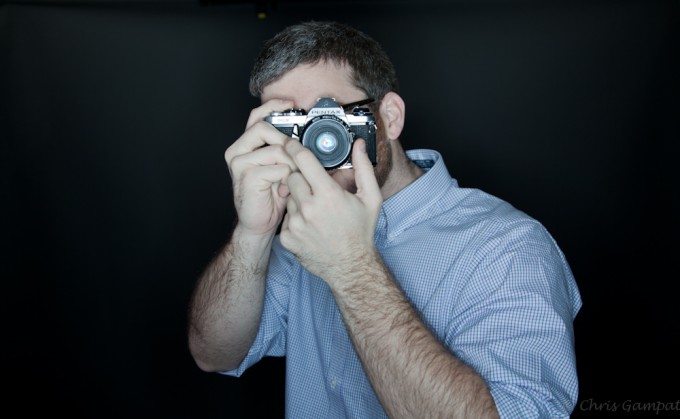Ring Flash—it’s a look that everyone loves and there are entire Flickr groups dedicated to showing off one’s work with the special lighting tool. The ExpoImaging Ray Flash has been reviewed here for quite a while now, and from our tests, we highly recommend it. Here’s why we love it and why we’ve chosen this one over the competition.
Complete Testing
Day 1– Getting a feel for the item.
Day 2– If you’re a video game lover, you’ll love the Super Mario, Sonic and Star Wars themed shoot we did this day.
Day 3– Shooting a friend as she dresses up a bit like Lady Gaga and does some other cool stuff.
Gear Tested With
Canon EF 24-105mm f/4 L IS USM
Ergonomics
The ExpoImaging Ray Flash is a special unit that takes the light output from your hot-shoe mounted flash and distributes it into a ring flash—effectively mimicking the effects of much much more expensive ring flash units that need to be plugged into power packs or walls. It tightly mounts onto your flash’s head and doesn’t fall off; in fact, it’s a bit tough to take apart. That’s not necessarily a bad thing: if you’re shooting for a long period of time, you don’t want it to fall off at all. So the extra couple of seconds that you’ll spend trying to unmount is quite worth it.
Be warned though, it’s big but not heavy.
Ease of Use
The Ray Flash, like other Ring Flash adapters, is very easy to use. You simply mount it into the existing flash head, and shoot. Of the flashes I’ve used, I’ve felt that it is second to the Orbis in terms of working with Canon’s E-TTL system. With the Orbis, I just needed to keep the flash on E-TTL and adjust the compensation accordingly. With the Ray Flash, I needed to sometimes switch it into manual flash mode.
Compared to the design of the Orbis and DIY Photography Ring Flash, it doesn’t work well as a softbox when used off-camera to the side. Instead, it functions well as a snoot.
However, due to just how thin the flash output area is, I’ve actually been able to get more range out of it than the units with larger surface areas like the Orbis. This is great to keep in mind if you’re using longer focal lengths and are further away from your subject.
Quality of Light
As stated earlier, the Orbis’s flash output complements skin tones better than the Ray Flash. However, the Ray Flash’s output looks more like an actual “million dollar ad” ring flash. I simply love the look from the Ray Flash and almost every photo I shoot puts a smile on my face.
The adapter cuts down the flash output by one stop of light, which means that it’s essentially just dampening and shaping the flash output. If you really want to think about it: lots of small flash modifiers like the Omnibounce cut down flash output by around the same amount. However, this softens the light that much plus it shapes it to look like a ring.
And that’s pretty cool if you ask me.
Quirks
Now, the ExpoImaging Ray Flash is very good, but it does have a couple of problems. For example:
– I wish that you could gel the output to compliment skin tones a bit better.
– It’s tough to switch out lenses if needed: so you’ll probably have to take the flash off the hot shoe, change the lens, and then put the flash back on.
– It can be hard to transport unless you pack it correctly. I usually stuff it into a messenger bag with my camera with lens attached and a flash. However, it doesn’t fit into any of my dedicated camera bags, so you’ll need to keep this in mind. With this said, I wish it were more portable and that there were perhaps a collapsible design without compromising the unit’s current strengths.
To be honest though, I’m a former photojournalist that has no problem bringing loads of gear on his back, walking 20-30 NYC blocks at the peak of summer. If you’re that type, then transporting this will be no biggie at all.
Vs the Competition
Orbis (full review in that link)- Once again, the Orbis is better balanced for skin tones and makes an absolutely wonderful and awesome softbox when used on the side of the camera like in the image above.
When used in front of your subject, it has a weaker flash output than the Ray Flash. The creator has told me that there is about a 2 stop light loss. If you’ve read my piece on saving your flash’s batteries, you’ll realize that this may probably kill your flash faster. But in practice, I didn’t notice a large difference. In the long run, I’ve grown to like the design of the Ray Flash more but I feel that if the Orbis’s physical design was more like the Ray Flash then the Orbis would have taken this one, hands down.
I’ve also created a tutorial on using the Orbis.
DIY Photography Ring Flash (full review linked)- Of all the Ring Flash accessories that I have reviewed, the DIY one has made me appreciate the construction of the units the most because of the fact that you need to physically put it together yourself. My only problem with it was the fact that the flash output was very, very cool in terms of temperature/white balance. It it much more portable than the Ray Flash, but the Ray Flash’s superior construction, light quality, and ease of use simply wins out in this situation.
GoPro Ring Flash Adapter– The GoPro is the super affordable option here. If you can tame it, it can deliver some really awesome images. The quirks about it are the fact that it cuts down the light quite a bit (not sure how much) and that it isn’t a perfectly shaped ring. This often requires you to get closer to your subjects to really mimic the ring flash look. If that’s not a problem for you, then this is for you. It’s also quite portable.
However, the Ray Flash’s construction, light quality, and ease of use wins in this case. But it does make me wonder a bit more about the price.
Please Support The Phoblographer
We love to bring you guys the latest and greatest news and gear related stuff. However, we can’t keep doing that unless we have your continued support. If you would like to purchase any of the items mentioned, please do so by clicking our links first and then purchasing the items as we then get a small portion of the sale to help run the website.











